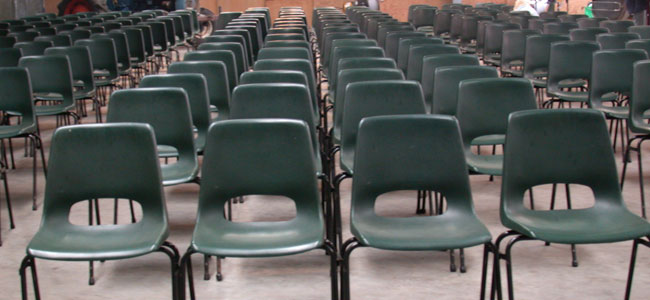Palestinian Women by Fatma Kassem
This book is a series of accounts by Palestinian women who lived through the ‘Nakba’ of 1948, in which they lost their homes and were either forced to leave the newly-formed state of Israel or were internally displaced within it.
Except that it’s not. Not really. We don’t really hear much from the women themselves – only short quotes in certain places, to illustrate a particular point. We don’t get to know each woman clearly enough to feel the full power of her story from start to finish.
For a long time, we don’t get to the women at all. We hear about Foucault’s theory of the historical past as a rhetorical construct for the present. We have a chapter on the methodological aspects of telling life stories, another chapter on the author’s own life story, and detailed scrutiny of her effect on the women’s stories, their reactions to the tape recorder, etc etc. We’re 80 pages in before we get to what we came here for, the stories of Palestinian women.
The book was initially a PhD thesis, and it shows. It shows in the style of writing, which is academic and often quite dry, in the extensive quoting of Foucault, Spivak, Said, Minh-Ha et al, in the constant analysis of process and acknowledgement of flaws and biases, and a lot of other tactics which are perfectly necessary in order to forestall the potential questions and objections of PhD supervisors, but which tend to distract and/or annoy the general reader.
It shows also, however, in positive ways. PhD theses, after all, require rigour in the methodology and depth in the analysis, and this book displays both of those merits. I loved the analysis of language and the body, for example:
In my reading, when they describe Israeli ‘entry’ into the cities or villages in 1948 the choice of language used by the women I interviewed is linked to the penetration of the female body.
Kassem then explores the multiple ways in which this is relevant, from the obvious piercing of Palestinian defences to the fact that brides on their wedding night are, like Palestinians in 1948, inadequately prepared for the sexual act, and that a woman experiences a ‘conspiracy of silence’ from her family, similar to that within the Arab ‘family’ who knew what was going to happen but did nothing.
I also liked the stories of people who tried to return to their homes, as any people return to their homes after a war, but were called “infiltrators” and forcibly expelled. What struck me most was how the women themselves used this term “infiltrator” to describe themselves or their family members who tried to return to their homes. It reminded me how easily we can adopt language that doesn’t reflect our own view of reality.
The account of women’s clothing was also interesting, and much more nuanced than the total condemnation of the hijab commonly seen in Western media. Kassem recognises that conservative religious dress can be seen as an assertion of male power over women’s bodies, but also points out many examples of young women choosing to wear this style of their own accord, in the face of disapproval from older family members. In the context of Palestinians living in Israel, wearing full Muslim dress is often seen as a rebellious, political act. One woman, for example, lost her teaching job over it.
Covering the body from head to toe could be interpreted as women complying with the religious imperative to discipline their body and reproduce their subordination. However, the choice by a young, educated woman to dress in such a fashion that ‘this woman who sees without being seen frustrates the colonizer (Fanon, 1965: 44) … can also be interpreted as an act of resistance; a refusal to comply…
My overall conclusion: lots of good stuff here, but could have done with a rewrite to make it more appealing to a general audience rather than an academic one.
Have you read this book? Did my review make you more likely or less likely to check it out? What are your views on academic style? Am I right that it should have been changed to appeal to a general readership, or should the onus be on the reader to persevere and learn to love academic writing?
Click here to see more books I’ve reviewed.





There are 4 comments
I think it clearly depends on how this is marketed. Is it intended to be for a general public? Then it would have needed a rewrite, if not, then not. For me personally it depends. While I like to know how information is gathered I still would prefer an account which puts the womens’ lives center stage. A book of investgative journalism would at present appeal more to me than a book written by an academic.
Hi Caroline,
Good point, and I should have clarified that in the post. I was assuming it’s intended for a general audience, mainly because I’m familiar with the publisher, Zed Books – it’s not an academic publishing house, more activist, and as such it appeals to a general readership. That’s my understanding anyway. Here’s what they say on their website:
“Zed Books is a critical and dynamic publisher, committed to increasing awareness of important international issues and to promoting diversity, alternative voices and progressive social change. We publish on politics, development, gender, the environment and economics for a global audience of students, academics, activist and general readers.”
That’s why I assumed a general readership as the audience. But you’re right, if they’re fine with it staying in academia, then no rewrite would be necessary. I agree that it’s often interesting to know how information is gathered — perhaps it’s more a matter of organisation, putting the women’s stories first and maybe having the procedural stuff as an appendix.
I’ve been trying to shift my writing from academic to commercial over the past 5 years, and it is crazy how differently organised they are. Yup, in a thesis you’ve got to get that theory out the way first. You have to show the intellectual framework you’re using and justify its relevance. If you don’t do this, critics fall on you from a great height. When writing for a commercial audience everything is reversed. Your conclusions (as I would think of them) come first. It has been a long slow process for me, making this changeover, and I’m not there yet! What I can’t quite understand is why the two types of writing have to be so different. But they somehow do.
Hi litlove, they are quite different indeed. My take on the reason is this: the academic method is clearly more logical and orderly, but it presumes that the reader will wade through all the theory and framework and methodology before getting to the substance. In academia this works, because the people reading it are already interested in the subject and familiar with all the references.
For a general audience, however, this falls down because the average person doesn’t care enough – you have to grab them immediately, or they lose interest. As a journalist, I was taught to assume that nobody cared about my story. The job of the first paragraph was to make people read the second paragraph, the job of the second paragraph to make them read the third, etc. It was a constant battle for attention. I think that in books it is less extreme than that, but the principle still holds. You have to work harder to interest the reader and maintain that interest, even at the expense of logic.
Does that make sense? Would love to hear your thoughts, or anyone else’s who’s reading this!